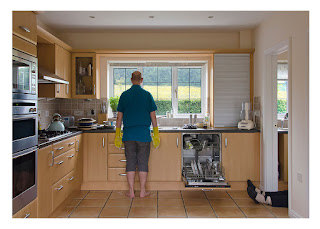In "Reading an archive: photography between labour and capital." Allan Sekula makes the point that archives are not neutral. They have been collected and collated by people, cultures, corporations, states, with an inherent bias in one form or another. "Photographic archives by their very structure maintain a hidden connection between knowledge and power".
Sekula goes on to describe how since the 1920s photographs have been produced by the picture press, government and advertising, for many purposes. That these pictures are now drawn from the archive and used to represent 'history' without comment on their original source is "naive or even cynical". Sekula goes on to ask "What present interests might be served by such an oversight?"
When photographs are used as historical documentary evidence they can skew perceptions. "Awareness of history as an interpretation of the past succumbs to a faith in history as representation. The viewer is confronted, not by historical-writing, but by the appearance of history itself".
"In an archive, the possibility of meaning is 'liberated' from the actual contingencies of use. But this liberation is also a loss, an abstraction from the complexity and richness of use, a loss of context. Thus the specificity of 'original' uses and meanings can be avoided, even made invisible, when photographs are selected from an archive and reproduced in a book."
Sekula illustrates this point with archived images taken by a commercial photographer in a coal mining town. The images consist of photographs of mining machinery used to illustrate company brochures and annual reports, alongside portrait images of miners and their community. These two kinds of images, although taken from the same commercial photographer's archive, have different contexts and would have been read in different ways (which Sekula describes as informational or sentimental). In their original context the images would be printed on different types of paper too; glossy brochure paper and family prints that informed the viewer of value through physical touch. These elements of 'informational and sentimental' are lost when the photographs are removed from the archive and printed alongside each other in a book. The 'radical antagonism' between these looks are eclipsed. Sekula describes the results of this homogenised process as "abstract visual equivalence".
It is always worth remembering that "photographs construct an imaginary world and pass it off as reality".
Sekula A. (2007). Visual Culture: a reader. Chpt 12 (Reading an archive: photography between labour and capital (1983)).







